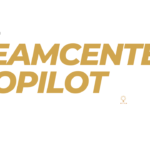In today’s fast-paced global market, businesses are constantly striving to streamline their processes, enhance product development, and maximize efficiency. In such a competitive landscape, having a robust system in place to manage the entire lifecycle of a product is crucial. The role of Product Lifecycle Management (PLM) here is crucial. In this blog, we’ll delve into the essence of Product Lifecycle Management, its components, benefits, and significance in modern business operations.
Table of Contents
What is PLM?
Product Lifecycle Management-(PLM) involves managing a product’s entire life, from its initial concept and design, through manufacturing and use, to its final disposal or recycling. It encompasses a strategic approach to managing data, people, business processes, and technology, with the goal of optimizing product development and ensuring that the right product is delivered to the market at the right time.
Components of PLM
1 Product Data Management (PDM)
PDM focuses on the management of product-related data and documents throughout their lifecycle. This includes CAD files, specifications, bills of materials (BOMs), and other relevant documentation.
2 Collaborative Product Development (CPD)
CPD facilitates collaboration among cross-functional teams involved in product development, including designers, engineers, manufacturers, and suppliers. It ensures seamless communication and coordination throughout the product development process.
3 Digital Manufacturing
Product Lifecycle Management integrates with digital manufacturing tools to optimize the production process, improve efficiency, and reduce time-to-market. This includes tools for simulation, process optimization, and manufacturing execution systems (MES).
4 Quality Management
PLM systems often incorporate quality management functionalities to ensure that products meet the required quality standards. This involves tracking and managing quality issues, conducting inspections, and implementing corrective actions.
5 Supply Chain Management (SCM)
SCM within PLM involves managing the entire supply chain, from sourcing raw materials to delivering the finished product to customers. It aims to optimize supply chain processes, minimize costs, and mitigate risks.
Benefits of PLM
1 Improved Collaboration
PLM facilitates collaboration among dispersed teams, enabling them to work together seamlessly regardless of geographical location. This leads to better communication, faster decision-making, and improved productivity.
2 Enhanced Product Quality
By implementing robust quality management processes, PLM helps ensure that products meet or exceed quality standards, leading to higher customer satisfaction and reduced warranty costs.
3 Faster Time-to-Market
Product Lifecycle Management streamlines product development processes, reducing cycle times and accelerating time-to-market. This gives companies a competitive edge by allowing them to respond quickly to changing market demands.
4 Cost Reduction
Product Lifecycle Management helps optimize processes, eliminate inefficiencies, and reduce rework, leading to cost savings throughout the product lifecycle. It also enables better resource allocation and procurement decisions.
5 Regulatory Compliance
Product Lifecycle Management systems can help ensure compliance with regulatory requirements and standards by providing traceability, documentation, and audit trails throughout the product lifecycle.
Significance of PLM in Modern Business
In today’s dynamic business environment, where innovation and agility are paramount, PLM plays a crucial role in enabling organizations to stay competitive. By providing a centralized platform for managing all aspects of the product lifecycle, helps companies adapt to market changes, minimize risks, and drive innovation.
Furthermore, as products become increasingly complex and interconnected, the need for effective Product Lifecycle Management becomes even more critical. Product Lifecycle Management not only facilitates collaboration and integration across departments and partners but also enables companies to harness the power of data analytics and digital technologies to gain valuable insights and make informed decisions.
Conclusion
Product Lifecycle Management is a strategic approach to managing the entire lifecycle of a product, from conception to disposal. By integrating people, processes, and technology, Product Lifecycle Management helps organizations streamline product development, improve collaboration, enhance quality, and drive innovation, ultimately leading to increased competitiveness and long-term success in the marketplace.
Read More Articles
Exploring the Power of Tiles in Teamcenter’s Active Workspace Client
Understanding the Contrast: Volume vs. Database in TC
Exploring TC: The Central Hub for Product Lifecycle Management
Understanding Item Revision in TC: A Comprehensive Guide
Unlocking Efficiency and Precision: Understanding Workflow Designer in TC
Understanding PLM (Product Lifecycle Management): A Comprehensive Guide
Demystifying BMIDE in TC: Empowering Effective PLM Solutions
Understanding Organizations in TC: Building Efficient Work Structures
Demystifying Datasets in TC: A Comprehensive Guide
A Step-by-Step Guide to Installing TC Software
Revealed Pseudofolders in Siemens TC: Simplifying Data Management for Engineers
Unlocking TC’s Potential: A Guide to Creating Custom Properties







